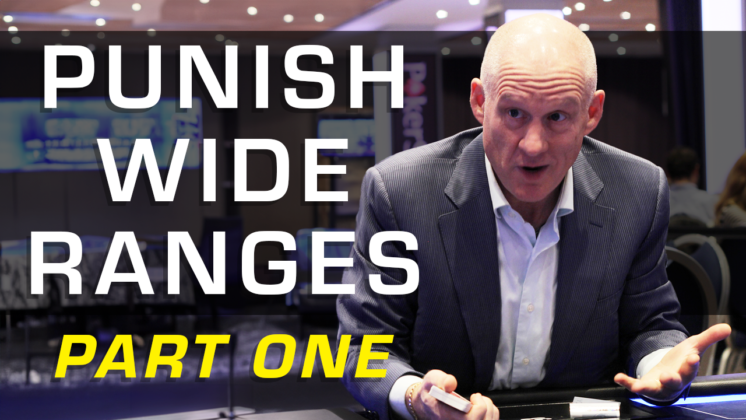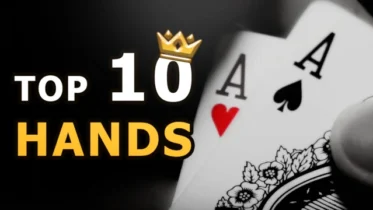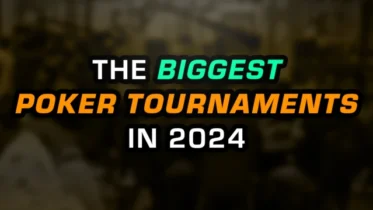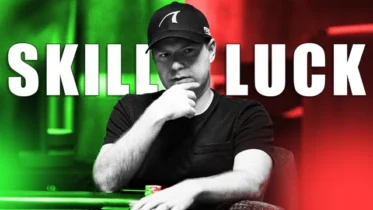It’s no secret that most poker players play too many hands preflop. In fact, you probably play too many hands preflop. There are great treatment programs for this ailment, but this is not one of them. I am here to tell you how to exploit the people whose preflop ranges are too wide, and aren’t even in recovery.
Why does everybody play too many hands?
I want to briefly discuss the reasons why people choose to play a hand, rather than fold, preflop:
- It’s a playable hand in the context of the prior action, stacks, reads on other players, etc. This is the most obvious, compelling reason to voluntarily put chips in a pot. It’s what winning players do. Everything beyond this reason is stretching one’s opening range too far.
- A player has looked at their cards, and decided that those cards need to see a flop. They’re paying little or no attention to the action around them – they are simply looking at their cards. I have coined a clever term for this: a player’s “see the flop” range.
Many low-stakes players have a “see the flop” range – a set of hands that want to see the first three community cards. Such players are, within reason, inelastic about the cost of their ticket to the flop.
- They like seeing flops. “Folding is boring” has become a rallying cry for poker players everywhere. If folding is boring, then the opposite of folding (putting chips in the pot) must be the opposite of boring – fun, exciting, interesting.
- There’s a big pot building and they don’t want to be on the sidelines for it. Just call it flop FOMO.
- Interpersonal dynamics among two or more players. This plays a bigger role than you might suspect. Particularly in live games, people’s egos can take over management of their chip stack.
- Random alpha particles and other cognitive processes about which I have no clue. Sometimes, people play hands preflop for no sane or even discernable reason. Which is fine – they paid for their chips – how they play them is neither your business nor mine.
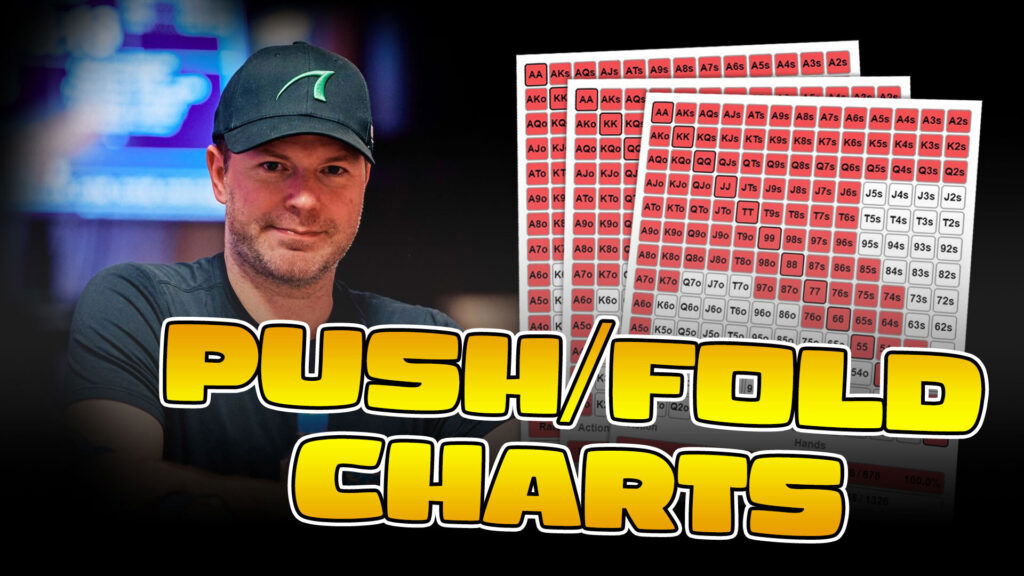
Make the best preflop decisions with Jonathan Little’s Push/Fold Charts!
How do we exploit wide preflop ranges?
If the other players at our table are seeing too many flops, that is costing them money. You can’t have a VPIP of 70% and be profitable – you just whiff way too many flops and burn your preflop investment. Because poker is a zero-sum game, if our opponents are losing money by playing too many hands, then it becomes available to us. How do we capitalize on that error and maximize our profit from it?
- Open to a smaller size in early position and larger in later position.
- Consider open limping certain classes of hands.
- Sit to the left of people with absurdly high VPIPs.
Open smaller early, bigger late
I’m going to say something shocking and controversial here: position is important.
Okay, it’s neither shocking nor controversial, but like all important lessons, it bears repeating. In this particular case, it’s important because
The people who benefit most from opponents playing too many hands are those who act behind them.
Let’s suppose you’re playing $1/$2 no-limit hold’em. You open A♦K♠ to $8 UTG+1, and a middle position player calls with Q♥4♥. Despite your hand being much stronger than theirs, this is not particularly advantageous for you, because that player will act after you throughout the hand. In fact, the players who most benefit from that player’s overly loose call are the ones between them and the button, should they enter the pot. Conversely, if you are in the hijack seat, that same player limps with the same Q♥4♥, and you raise to $8 with A♦K♠, this is a great situation for you.
In fact, the power balance has shifted sufficiently that you can open bigger in later positions, particularly when there have been limpers in front of you. A “standard” recommendation is to open to three big blinds, plus one extra for each limper in front of you. If your opponents are playing too many hands (and most do) you can open bigger in late position. I suggest 4x or even 5x plus one for each limper. In our $1/$2 example, I would open to $10 or $12.
This will work as long as (a) your opponents continue to call with weak ranges, and (b) you don’t fear frequent 3-bets. These conditions hold for almost all low stakes live games, so I encourage you to experiment with these larger sizings.
Note, by the way, that you’re giving away no hand strength information with this strategy. If I see that Martha opens to 3x UTG+1, but 5x in the cutoff, she’s given me nothing about her hand strength.

Read one of the highest regarded articles on the PokerCoaching.com blog: The Bankroll Bible
Consider limping in early position with certain classes of hands
Don’t freak out. I know that almost all reputable training sites and no-limit hold’em coaches encourage students to never limp. That is great advice, particularly for beginning or weaker students. Why? Because so many poker players have a “see the flop” range, because folding is boring – all the reasons that I mentioned above. Giving a student permission to limp under any circumstances can quickly be misapplied as permission to limp under a lot of circumstances.
I’m going to give you credit for not misapplying this advice.
Suppose you are in a game where the most common preflop scenario is a single raise, with multiple players seeing the flop. This dynamic frequently exists in low stakes live games:
- A player opens for a raise in early position, gets a handful of calls behind, and then the blinds say, “Pot odds!” and call as well.
- Two or three players limp, the cutoff raises, the big blind calls, and all the limpers call.
Sound familiar? If so, there are two types of hands with which you might choose to limp:
Premiums
These are the hands that are traditionally limp/reraising candidates. In a tight game, an early position player waking up with KK might fear that if they raise, everybody will fold, and they’ll win nothing but the blinds. So they limp, hoping for a raise behind them. Then they come over the top with a limp/reraise.
This is particularly effective in the kinds of games I just described. You are in a $2/$5 game with $500 stacks, and limp UTG+1 with K♥K♣. Now UTG+2 makes it $20, gets two calls behind them, and the big blind calls as well. You make it $150. This puts any hand but aces in a no-win situation. They can fold, lose their $20 investment, and their equity in the pot, or call, taking very much the worse of it. If anybody does call, there will be almost $400 in the pot with $350 behind – you can jam on any non-ace flop.
“But wait, Lee – if I do that, I’m turning my hand face-up. Nobody limp/re-raises with anything but the premiums.” Well, first, you are allowed to limp/re-raise with non-premiums, and we’ll get to that in a minute. But also, what are they going to do about it? Suppose they know you have a premium pair? The damage has already been done for the three players who called the initial raise. This is the one of the penalties that loose players pay for calling raises too wide. When a 3-bet comes in, they’ve already invested four BBs, and can either burn that investment, or send another $130 to chase after the original $20. Neither option is attractive, so you win either way.
That’s enough for now. To keep this article a readable length, I’m going to break it into two pieces – but you can read the second half here. For now, let’s briefly summarize what we’ve learned so far:
- Almost all poker players (probably including you) play too many hands preflop.
- Many players play so many hands that it is impossible for them to be profitable – they are dumping money onto the table at every session.
- Because poker is a zero-sum game, some of that money will come to us. With the correct strategy we can maximize the amount that we scoop in.
- Three techniques for maximizing that profit:
- In late position, open to a larger size than you do in early position.
- Consider limping in early position with specific classes of hands.
- Keep extremely high VPIP players on your right.
We’ve covered the first class of hands that you might limp in early position – the premium hands such as pocket aces, pocket kings, and AK. We will get to the next class of limpable hands in the next installment.
